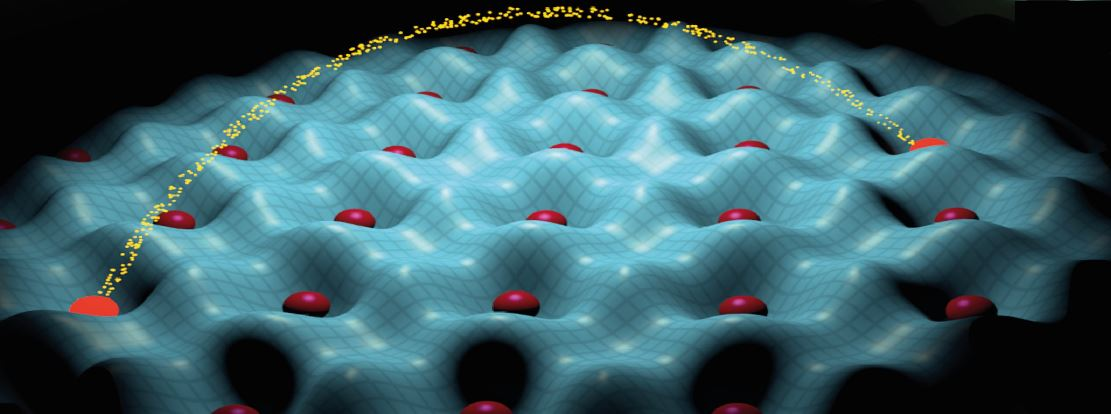Speaker
Description
Jérôme Faist1, J. Enkner1, L. Graziotto1, M.Beck1, C. Reichl2, W. Wegscheider2, G.Scalari1
1 Institute of Quantum Electronics, ETH Zurich
2 Laboratory for Solid State Physics, ETH Zurich, Zurich 8093, Switzerland
In a microcavity, the strength of the electric field caused by the vacuum fluctuations, to which the strength of the
light-matter coupling WR is proportional, scales inversely with the cavity volume. One very interesting feature of the
circuit-based metamaterials is the fact that this volume can be scaled down to deep subwavelength values in all three
dimension of space.1 We have used transport to probe the ultra-strong light-matter coupling2 and shown that the
latter can induce a breakdown of the integer quantum Hall effect3. The phenomenon is explained in terms of cavityassisted
hopping, an anti-resonant process where a an electron can scatter from one edge of the sample to the other
by “borrowing” a cavity photon from the vacuum4. Recently a proposal suggested that the value of the quantized
Hall voltage can be renormalized by the cavity5, but later work demonstrated that such renormalization corresponds
to a singular point in the parameter space. We have investigated this effect experimentally using a Wheatstone bridge
geometry6 and found the quantization to be held7.
We have also investigated a new experimental geometry where a hovering resonator is positioned with
nanoactuators above the Hall bar, providing a way to continuously vary the light-matter coupling up to a value of
WR/w=0.33 while the sample is maintained at millikelvin temperatures. Using this approach, we observe the effect of
light-matter coupling on the effective electron g-factor as well as its effect on the gap of the Laughlin states. In
particular, we observe a enhancement of the 5/3,4/3 and 5/7 fractional state gaps by up to a factor of two8.
1. Scalari, G. et al. Ultrastrong Coupling of the Cyclotron Transition of a 2D Electron Gas to a THz Metamaterial. Science 335,
1323–1326 (2012).
2. Paravicini-Bagliani, G. L. et al. Magneto-Transport Controlled by Landau Polariton States. Nat. Phys. 15, 186–190 (2019).
3. Appugliese, F. et al. Breakdown of topological protection by cavity vacuum fields in the integer quantum Hall effect. Science
375, 1030–1034 (2022).
4. Ciuti, C. Cavity-mediated electron hopping in disordered quantum Hall systems. Phys. Rev. B 104, 155307 (2021).
5. Rokaj, V., Penz, M., Sentef, M. A., Ruggenthaler, M. & Rubio, A. Polaritonic Hofstadter butterfly and cavity control of the
quantized Hall conductance. Phys. Rev. B 105, 205424 (2022).
6. Schopfer, F. & Poirier, W. Testing universality of the quantum Hall effect by means of the Wheatstone bridge. J. Appl. Phys.
102, 054903 (2007).
7. Enkner, J. et al. Testing the Renormalization of the von Klitzing Constant by Cavity Vacuum Fields. Preprint at
https://doi.org/10.48550/arXiv.2311.10462 (2023).
8. Enkner, J. et al. Enhanced fractional quantum Hall gaps in a two-dimensional electron gas coupled to a hovering split-ring
resonator. Preprint at https://doi.org/10.48550/arXiv.2405.18362 (2024).

